Laying sod is a great way to quickly transform a bare yard into a beautiful, lush lawn. But figuring out how much sod you need can be tricky, especially when you consider that every vendor sells sod in different quantities.
To help you figure out exactly how much sod you need to transform your yard, we created this easy-to-use sod calculator.
But you’ll need more than just numbers to create the perfect lawn. Below, we’ll give you all the tips and tricks you’ll need to order the right amount of sod and choose the right type of grass for your yard.
Sod Calculator
Total Area:
- Add a yard section first.
N/A
N/A
N/A
N/A
How To Use The Sod Calculator
Preparation
- Sketch out the areas of your yard to be sodded
- Divide the areas into common geometrical shapes – squares/rectangles, circles, and triangles
- For squares/rectangles: measure the length and width
- For circles: measure the radius
- For triangles: measure base and height (see this page for an explanation)
Entering the data into the Calculator
- Select Feet or Meters as your unit of measurement
- Select the shape type you are measuring for sod
- Enter the relevant measurements
- Click the “Add Yard Section” button
- You can then see the amount of sod required
- If you have more sections of the yard to measure, then choose the shape, enter measurements and add the yard section
- The calculator will accumulate the results and tell you how much sod you need in total
- When done, you can send yourself the results in an email so you don’t forget them
How Many Square Feet in a Pallet of Sod?
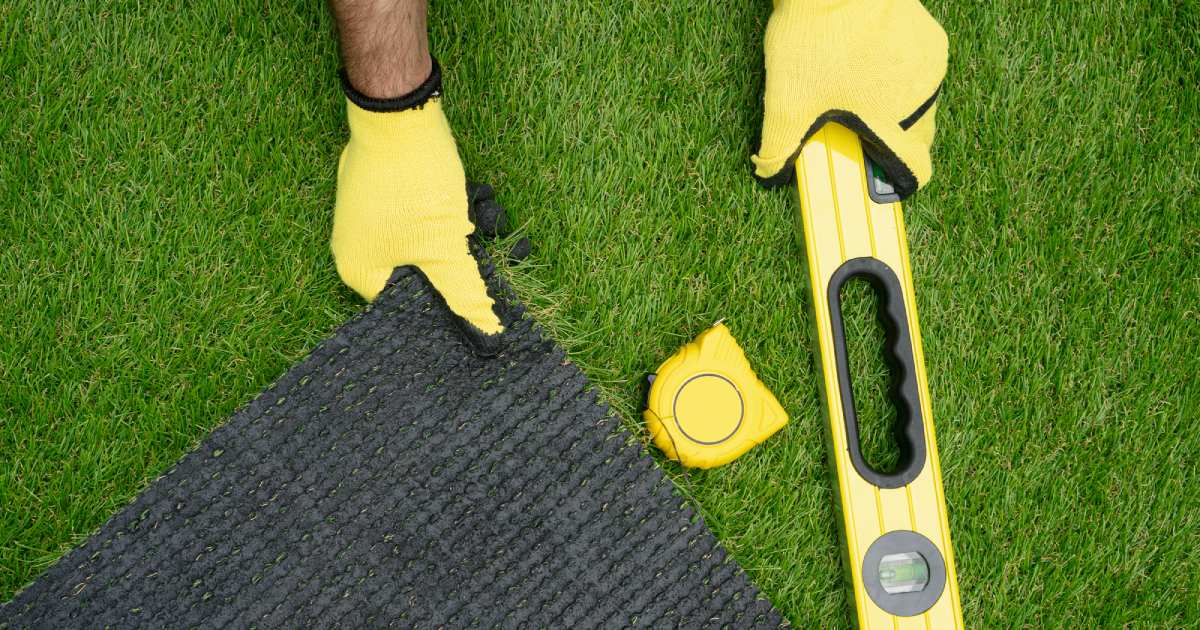
In general, there are about 450 square feet of turf grass in a pallet of sod. But this amount can vary depending on the type of sod and how it is cut.
Slab Cut Turf
Warm season grasses, such as zoysia and centipede, are usually cut in rectangular slabs. These slabs typically measure 16 inches by 24 inches. Each slab covers 2.66 square feet.
Depending on the producer, one pallet of slab-cut turf grass will have between 400 and 500 square feet of sod.
Mini Hand Rolls
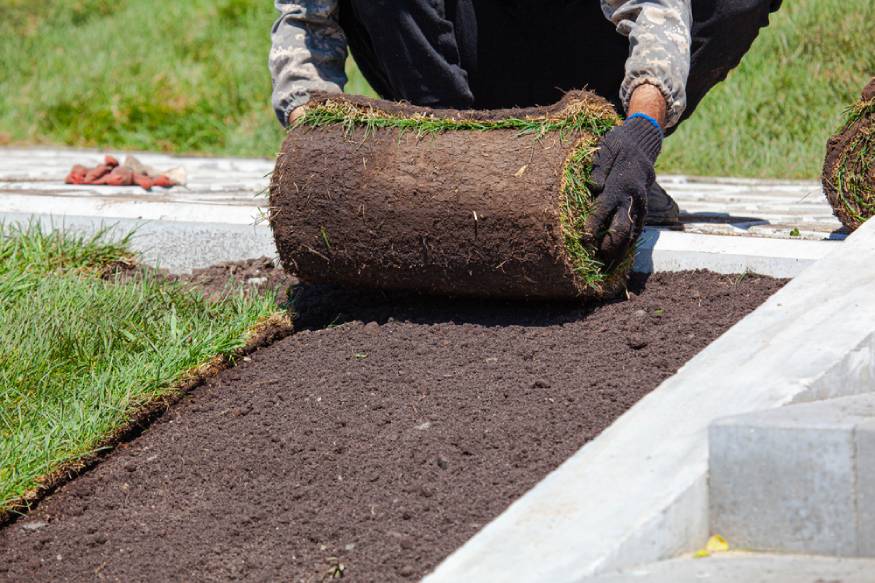
Cool season grass is typically cut into long sections and then rolled before being loaded onto a pallet. When these cuts are made in smaller sections and rolled by hand, they are called mini hand rolls.
Similar to slab-cut turf, a pallet of mini hand rolls will have between 400 and 500 square feet of sod.
Large Rolls
Popular types of cool season grasses, like tall fescue and Kentucky bluegrass, are often cut by machines and rolled into large rolls.
Pallets of large rolls of turf grass can hold between 500 and 700 square feet of sod.
Tips For Ordering Sod
To order sod for your yard, you’ll want to start by measuring the space where you plan to put grass. Enter those measurements into our sod calculator above to figure out approximately how many square feet of sod you’ll need.
Then, call your local sod company to find out how many square feet of your desired turf grass type typically come on a single pallet.
By dividing the total amount of sod you need by the typical square footage on a pallet, you can figure out exactly how many pallets of sod you’ll need.
Note: Keep in mind that many turf companies sell sod by half pallets and by single rolls or slabs.
Here are a few more tips to help with your sod project.
Be Sure to Overorder
Our sod calculator will help you determine the right amount of sod to cover your space. But you’ll want to add approximately 5 to 10% additional square feet to your final order.
This guarantees that you’ll have enough sod to cover those odd-shaped corners and tapering edges, and to account for mismeasurement.
Order the Right Type
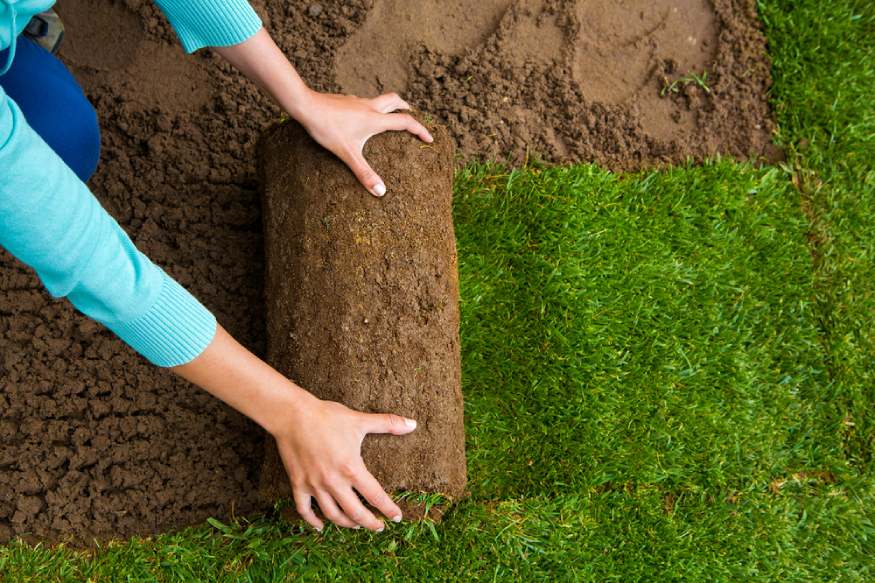
Just as important as ordering the right amount of sod is ordering the right kind.
Many different types of grass are available in sod form. Both your climate and the specific layout of your yard will determine which type of grass—or which mix of types—you’ll want to put down.
Cool season grasses are best for northern states. These grasses grow well when the ground temperature is around 50 degrees. When it gets too hot, they tend to turn yellow and go dormant.
On the other hand, warm season grasses are best for southern states. These types grow best at temperatures between 70 and 90 degrees. When it gets too cool, they turn yellow and stop growing.
Learn more: There is a handy article here that discusses recommended grasses for your climate.
For states that experience both cold winters and hot summers, a mix of cool season and warm season grasses will provide the most color throughout the year.
Note: You should also consider how much sun or shade your yard gets over the course of the day. There are warm season and cool season varieties that fare better in full sun while others do best in part shade.
We’ll dive deeper into the specific types of grass available in sod form, below.
Double Check the Weight
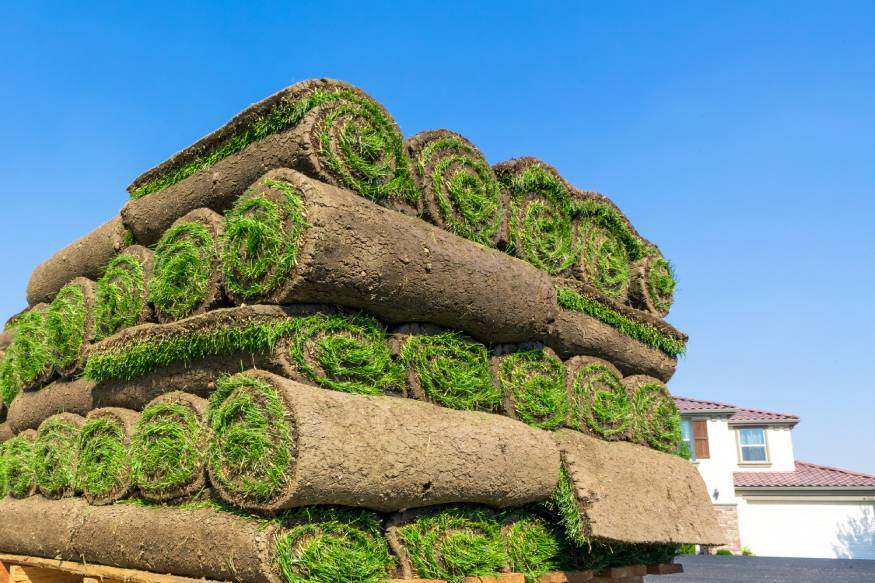
Before you place your sod order, it’s a good idea to consider the total weight. You may be able to haul smaller orders home yourself, but larger ones are best delivered.
To give you an idea of sod weight, a pallet with 60 large rolls, which will cover approximately 600 square feet, weighs about 1 ton.
The company you place your order with should be able to give you an approximate total weight to help you decide how to get the sod to your house. But keep in mind, the weight can vary greatly based on how wet the sod was when it was harvested.
If in doubt about whether or not your truck can handle the load, it’s best to opt for delivery.
The Best Time to Install Sod
Sod requires a lot of water in order to get established. Because of this, spring and fall tend to be the best times of year to install sod.
Of course, the type of sod being installed plays a role in determining the optimal timing.
If you’re installing cool season sod, it’s best to do so in the fall after the temperatures have dropped some. For warm season grass, do it later in the spring when the air has already warmed up.
Whatever type of sod you’re installing, be ready to provide plenty of manual watering if mother nature doesn’t provide daily rain. If installing sod in summer, be prepared to water multiple times per day.
Types of Grass You Can Buy as Sod
All grass grown as sod can be purchased in seed form as well. But not all grass found in seed form is easy to find as sod. For this reason, your sod choices are more limited.
But there are still plenty of great sod options available in the warm season, cool season, and mixed-grass categories.
Warm Season Grasses
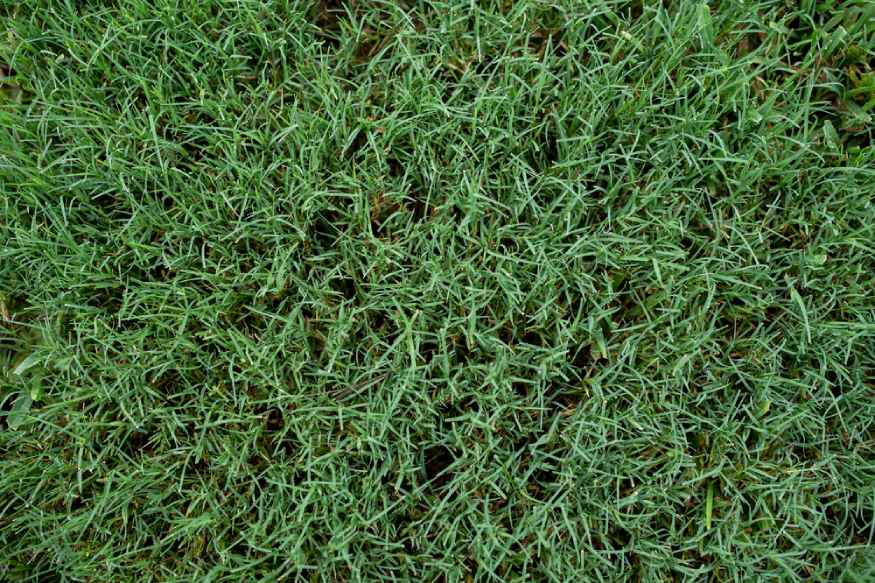
Warm season sod generally comes in slab-cut pieces that take a little more effort to install. These varieties are best for southern regions that experience hot summers and moderate winters.
Here’s a breakdown of the most common warm season grasses produced as turf and what environments they’re optimal for.
- Bahia – Bahiagrass is highly heat and drought tolerant, and perfect for full sun and poor soil.
- Bermuda – Bermudagrass is very heat and drought tolerant, and optimal for high-use areas in full sun.
- Buffalo – Buffalo grass is low maintenance and great for dry yards with full or part sun.
- Centipede – Centipede grass is a low, slow-growing variety that requires little maintenance and is somewhat shade tolerant.
- St. Augustine – St. Augustine grass is shade and salt tolerant and good for high-traffic areas on the coast.
- Zoysia – Zoysia grass requires little water and maintenance and will tolerate a lot of foot traffic and some shade.
Cool Season Grasses
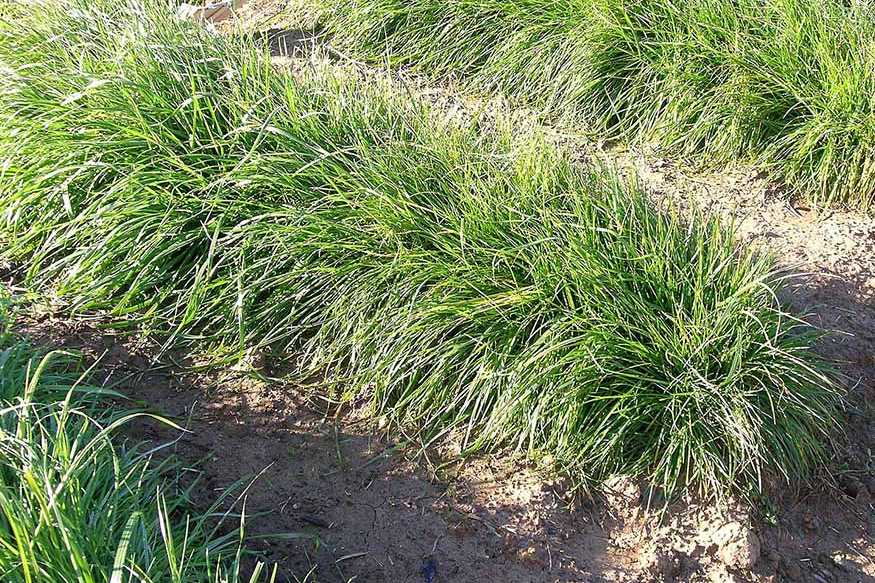
Cool season grasses typically come in mini or large roles, making them quicker to install. They are best for northern climates that experience cool summers.
Here’s a breakdown of our favorite cool season grasses available in sod form.
- Fine Fescue – Fine fescue grass is highly shade tolerant and drought tolerant but less able to deal with extreme heat and cold.
- Kentucky Bluegrass – Kentucky bluegrass is very cold tolerant and great for high-traffic areas.
- Perennial Ryegrass – Perennial ryegrass has good cold tolerance and some shade tolerance and is prized for its quick growth.
- Tall Fescue – Tall fescue is heat, drought, and shade-tolerant but not the best choice for high-traffic areas.
Mixed Grasses
Many sod options include a variety of different grass types seeded together. This makes the sod more likely to thrive in a variety of different environments and allows you to put down one type of sod throughout your yard even if you have varying areas of shade and sun.
In transition zones near the middle of the country, you may find sod mixes that include cool and warm season grasses. These mixes allow for green lawn all year long.
Always Double-Check Your Measurements
When it comes to putting down sod, getting your measurements right is paramount. Once you have your yard accurately measured, input the numbers into our sod calculator above to find out how many square feet of sod you’ll need. Don’t forget to add about 10% overage to account for gaps and mismeasurement.
Almost as important as an accurate measurement is choosing the right type of grass to put down. Both cool season and warm season grasses are available in sod form. All varieties have different benefits to offer, and you’ll need to consider your micro and macro climate to find the right type for you.
Still have questions about using our sod calculator or choosing the right sod? Comment below and we’ll be happy to help!